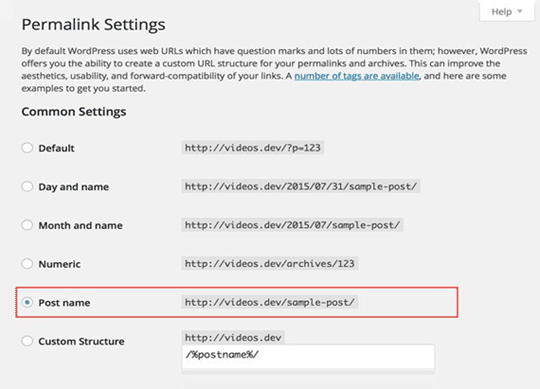You are almost ready to go live, so I won’t waste your time with introductory shenanigans. The title says it all.
So here’s a check list of things you should thoroughly look over before pressing that launch button to put your WordPress site on the web.
1. The Host
No relation to Stephanie Meyer’s rubbish book. You should take a comprehensive look at your available resources and plans, and see if the hosting provider has plans to accommodate your growing business.
Managed Hosting will take care of all your back-end needs, including backup, security, and more, while a more conventional option is to ‘rent’ server space on shared hosting providers (great for single-person blogs and freelancers) for dirt-cheap prices, but you have to take care of your own security and backup. Virtual Private servers are the best bet for fledgling enterprises starting to grow.
WordPress.com is a Managed solution. Bluehost and Siteground are shared hosting providers.
2. The Permalinks
Check your WordPress default permalinks structure and change it to prevent the hassle and SEO-related drama of future redirects.
By default, you get a URL structured like this: http://example.com/?p=123
A good URL will immediately cue your users in on the page they’re on, and is easier for bots to crawl through. Date/Post-name (as used by Pagely) is good for websites that are content-heavy and update daily. Most work well with Category/Post-Name, but it’s a good SEO practice to keep your pages close to the parent domain for maximum benefit, so Post-Name works the best for SEO.
3. The Backup Plugins
Every single professional you meet will give you this advice, so make sure you do it: install a backup plugin, create a strict schedule, and no matter what happens stick to it.
Anytime you mess up or get locked out or even hacked a backup will be your one point of rescue. There are free and paid plugins out there, with clouds and storage options so you don’t even have to worry about server space your backups take up. Think UpDraft Plus, VaultPress, BackupBuddy, BackWPup, etc.
Make sure your schedule makes backups at least as frequently as you will update/maintain your website, and check that the plugin creates backup for both website and database.
4. The Security
This is no laughing matter.
It is critically important to secure your WordPress website, and there are some plugins and a few tricks that you can use to make the security as airtight as possible. Even if you are nervous at the thought of delving into scripts and codes to hide as much potentially information from hackers as possible, you can still install plugins (like WordFence) that simply do it for you.
First off, install a hardcore security solution like WordFence, Sucuri, Codeguard etc. to check routinely for malicious activities.
Next, secure admin login by never using default admin username and password and installing plugins like Two-Factor Authentication.
5. The Forms
They are unpleasant (for your users) as it is. The least you could do is make them short and make sure they function properly, especially if your website is an online store.
First ensure that any features you have added are functioning properly across all devices (think inline validation, popups, suggestions, social logins, etc.). Check that the buttons aren’t returning a javascript void(); and actually redirecting to somewhere you can confirm that the action has taken place.
Sometimes an error caught early can save a lot of resources from being poured down the drain. You should also test the email newsletter buttons (if you have any) to see whether it’s being sent to the right place (and not the spam or advertisement section of user’s inbox).
6. The Media Content
There’s more to media content than just adding it judiciously. Here’s what you should keep in mind:
- Alt text. Add alternate text (Descriptive names and text for visual media, audio and text transcripts for videos) to make your site more accessible but to also rank better on search rankings.
- Optimize/compress them all for maximum performance. Heavy pages are slow to load and that loses visitors. Use lazy load.
- Size the media properly. Don’t just tick a box that ‘resizes’ the images based on viewport. Actually optimize them for responsive websites.
7. The Responsive Test
Test your media queries rigorously before you let your WordPress site go live. Tools like Screenfly or Responsively will check your responsiveness (per page) on an emulator for over a dozen different sized viewports. Use them.
8. The Performance Test
No one has the time to wait around for your site to load up. So even after all the compressing and minifying, you need to test just where you rank on Google PageSpeed Insights or Pingdom. These tools will test your page’s “request to above the fold rendering load time” and “request to full page load time”, TTFB (Time to First Byte) etc.
Score well and you’re good to go. Score less than average and you probably need to put in some solid work on back-end and front-end performance optimization.
Use Caching plugins (WP Super Cache, WP Total Cache, etc.) and if you can manage it, a CDN. Minify all JavaScript and CSS code.
9. The Analytics Software
Every growing business needs to chart its own daily successes and failures and make improvements. Tools like Google Analytics are easy to use and keep track of important numbers such as visitors, viewed pages, most viewed content, etc. It’s an important tool during A/B split testing too when you’re trying to determine what works and what doesn’t (UX research).
10. The SEO Solution
WordPress is great for SEO, but its powers can be enhanced with plugins like Yoast SEO. From sitemaps to good writing to URL customization and more, it takes care of most things even remotely related to better rankings on search results and optimizing for it.
The Upshot
That’s it. If you ticked them all ‘yes’, then you know what to do…
Go Live.
[Recommended reading: 7 SEO Strategies To Boost Brand Awareness]
This article is written by Tracey Jones who works as a professional WordPress developer for a leading WordPress theme customization company – HireWPGeeks Ltd. Being a passionate blogger, she has been regularly writing excellent blogs and articles related to technical stuffs.




Comments are closed.